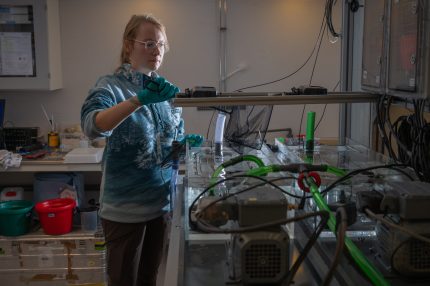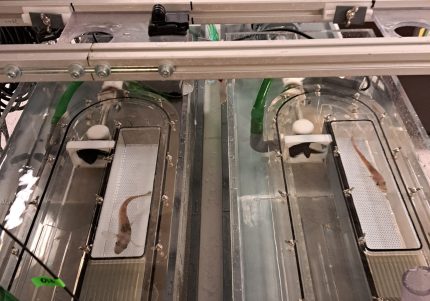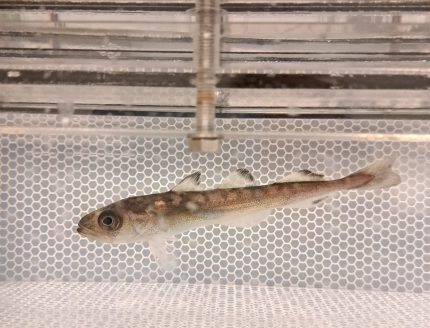SEPTEMBER 16
SCIENTIFIC WORKS
Introduction to Polar cod experiments by Max
Let’s dive in and take a look at some Arctic fish! During her year on Svalbard, our PhD student Max Willems did swimming experiments with Polar cod (𝘉𝘰𝘳𝘦𝘰𝘨𝘢𝘥𝘶𝘴 𝘴𝘢𝘪𝘥𝘢). Polar cod is one of the most important links in the Arctic food web: they are what we call a keystone species. The bigger animals love to eat Polar cod, and the smaller animals are eaten by this fish. Polar cod is a true Arctic species, and is therefore vulnerable when water temperatures increase.

YESSS fish experiments focus on swimming in different seawater temperatures in all four seasons. Max measures how much oxygen the fish use while swimming, whether their swimming “behaviour” changes, and how long they can swim at a comfortable pace. Lab environment conditions are crafted to be as close to a natural setting as possible. During winter, the fish swam and Max worked continuously in the dark, to imitate the Arctic night. The lab water comes from the fjord right next to our station.

Max uses two swim tunnels at a time – devices specifically designed for fish swimming experiments. The water is cooled constantly by thermostats, and before the experiment starts, Max checks if the water temperature is stable. Once everything is ensured, the fish go inside their swim tunnels. Before the experiment begins, the fish spend thirty minutes getting used to the location, since putting them inside the tunnel can be a bit stressful for them, especially the first time they undergo it. Then, we increase the speed of the water in the tunnels stepwise every 10 minutes. When the fish show signs of exhaustion, or are not swimming at all, the experiment is stopped. The fish get to calm down, receive a little snack and return to their tanks.

The main thing Max wants to find out is whether Polar cod can live normally when water temperature increases. Can they still swim as usual if the seawater is three degrees warmer? Do they use more oxygen in these conditions? Does anything change in the fish on a cellular level? And could, in theory, the fish adapt to warmer seawater? Many experiments have been conducted so far, and the next step for Max will be to analyse all the data from them.
